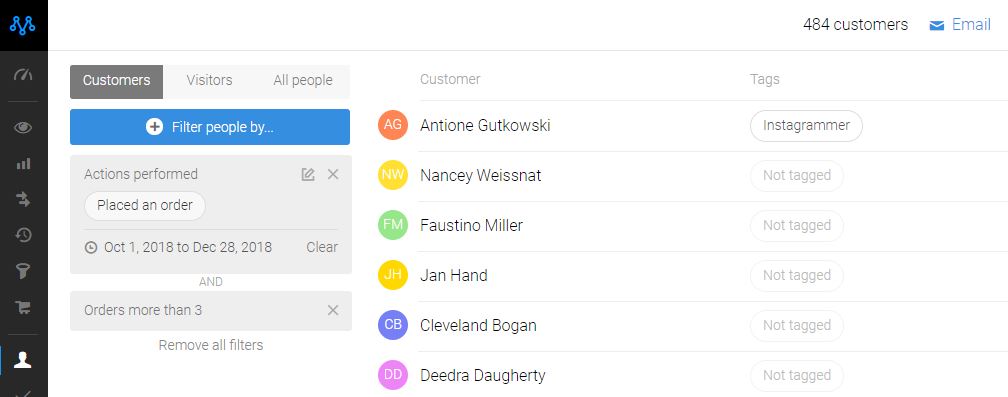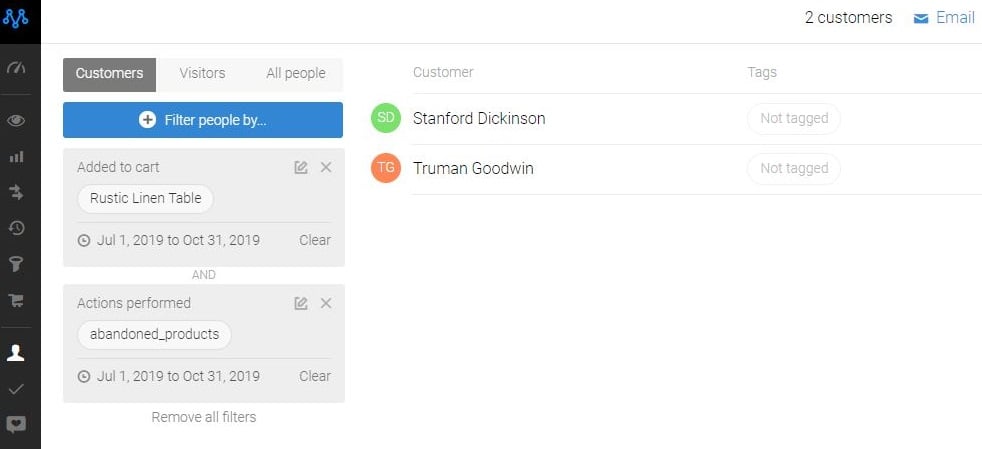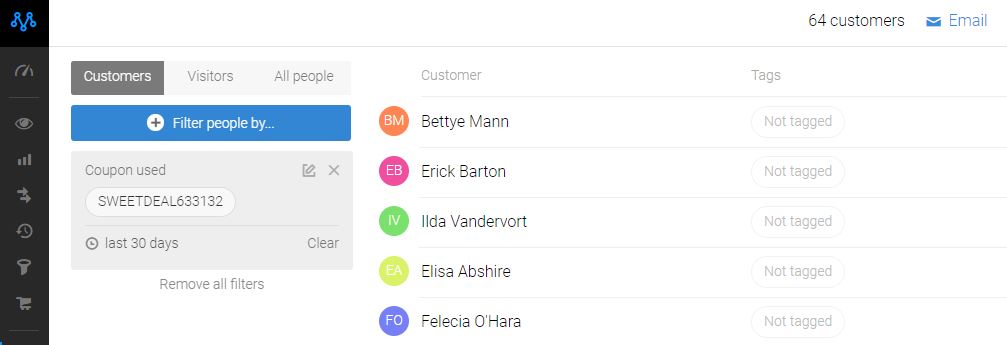
The secret ingredient of truly relevant emails
There isn’t an ecommerce marketer who’d deny the importance of customer segmentation for email personalization. We have so much first-party data on user behavior. Of course, we’ll use it to give them a better experience and more relevant products!
However, there’s one additional layer of data that most ecommerce brands overlook. That leaves their personalized email marketing half-done. For example, I got such an email:
“Hey, Dimira,
Need sparkly heels for that dress you got? We got you covered!”
And I wondered: “I got this dress 3 years ago for a wedding and it’s definitely out of style by now…It doesn’t even fit me anymore, why would I need the heels?”
A sale lost right there.
Why?
Because the brand didn’t pay attention when the action was taken. Their click through rates must be abysmal.
Personalized content and upselling with relevant products is truly awesome, but timing matters, too.
The secret ingredient
For proper customer segmentation, the time when the action was performed is important:
- when a product was bought,
- when the customer showed interest in a certain category,
- when a huge order was placed,
- when a coupon was applied
Online shopping is a very dynamic behavior and an action taken too far back is long irrelevant to the customer.
That’s why for the best results, emails should be tailored not just by action but by the time of taking the action as well. Timely emails are truly relevant.
Time-specific filters in customer segmentation
Adding a time frame to customer segmentation makes sure you catch potential conversions while they’re hot. You want to offer products that people still need.
When the event happened gives you context for tailoring your promotion. Was the person shopping for themselves or during the holiday season? Which version of the product they got? How long have they been using it? Did they use an influencer’s discount code?
Use cases of time-specific segmentation
Here are a few examples of hyper-targeted email campaigns made possible with time filters.
Upsells and recalls
To upsell properly or recall a product, you need to know who bought a specific product during a specific time. In these cases, it’s definitely better to reach out only to the respective customers and not anyone who ever bought the product, going back 5 years.
Related: Driving repeat orders
Reactivation of holiday shoppers
Last year’s holiday shoppers are a VIP segment to retarget this year. It’s easily done with a simple time filter. Maybe add an order value threshold to make sure they shopped gifts, not just a one-off item. You know those people bought gifts from you before so a win-back offer is right on point.

Pictured: A selection of holiday shoppers for 2018 to be reengaged with a new holiday offer email.
Old interest, new offer
It’s handy to segment people by the coupons they used. It says a lot about their shopping behavior. You can recognize different types of customers.
For example, shoppers using BACK2SCHOOL in August are most probably price-sensitive parents shopping for their kids. On the other hand, a SPRINGBREAK coupon in February is usually used by college girls getting ready for their week of partying.
A similar offer tailored to their interests will get you higher conversion rates.
Read more: Data-driven cohort analysis (Case Study)
Keep them up to date
To encourage old customers to buy, you can use behaviors like cart abandonment in the past.
How exactly?
Filter your abandoners of a specific product that you’ve relaunched or improved. This is to make sure they abandoned the old version. Offer them the new one with detailed information on how it is better now.

Pictured: Selection of customers who added a particular product to cart and then abandoned it in the period before launching a new version of the product.
Restocking made easy
If your products need supplies – like a coffee machine and capsules, re-order alerts can be perfectly timed for just when they’re running out.
Use time-based filters to identify the people who bought a month’s supply two months ago. There you have one particular segment to reach out to. Do that for other possible cases in order to drive more reorders.
In depth: What to steal from subscription boxes without offering one
Monitor influencer results closely
To pay out affiliate commissions, you need to be sure of the revenue brought in by each influencer, right?
A simple segmentation of the sales made through an influencer coupon code in the past month (or any period) gives you the accurate number without any attribution hassles. You can also retarget those customers on the social channel they found the coupon.
Related: Influencer marketing tracking

Pictured: Segment of customers who used a certain coupon in the last 30 days.
Instead of a conclusion
We honestly recommend you start using time parameters when segmenting your customers for more tailored email campaigns. Your email marketing strategy will get a boost – more opportunities for highly engaging communication.
Learn more
Build and grow your ecommerce brand
Metrilo’s mission is to help you build your ecommerce brand and win your place in the customer’s heart. We share what we learn from our daily work with product innovators and founders here. Subscribe to our weekly newsletter to get the freshest lessons and conquer your niche.
We promise, no spam.
Thank you for subscribing!
See you soon :-)



